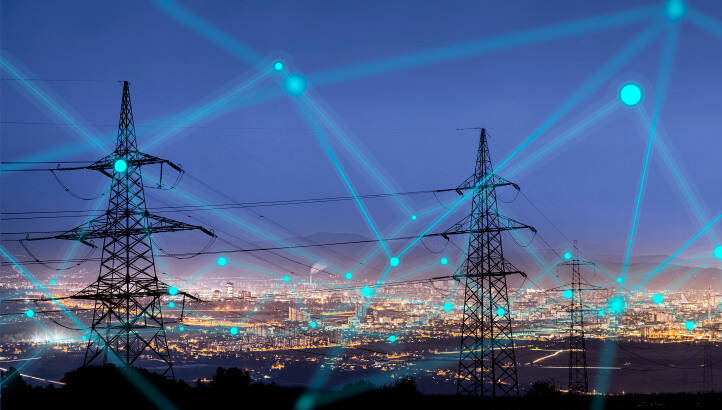Last week, the UK experienced its biggest power cut in a decade, causing disruption on the roads and railways and leaving almost a million homes without electricity. As we move towards a low carbon future, we’re likely to be a greater risk of blackouts like this – but businesses could play a key role in keeping the lights on.

When the grid was first established in the 1920s, the majority of our electricity was generated by thermal power plants, so it was designed with these in mind. The way we generate and use electricity has changed dramatically since then. We’re now becoming increasingly reliant on renewables and distributed generation, which can be intermittent and unpredictable.
Transitioning to lower carbon forms of generation is a necessary and positive move, but it does mean that balancing the grid is becoming more complex. To prevent blackouts from becoming a common occurrence in the future, businesses must play their part in helping to keep the grid balance – and if they do so, they could see some real benefits to their organisation.
What caused the blackout?
National Grid must always keep the frequency of the grid at around 50Hz, because a deviation of more than 1% in either direction can cause parts of the energy system to automatically shut down as a safety precaution.
On 9th August, two power plants experienced almost simultaneous power outages; the Little Barford gas-fired power plant and the Hornsea offshore wind farm both went offline within minutes of each other. When generation levels drop, the grid’s frequency also drops, and as these two power plants typically provide 5% of the UK’s electricity and power needs, this event triggered an automatic shutdown.
How can businesses help?
Keeping the grid balanced involves maintaining a delicate equilibrium between supply and demand – so when demand drops, generation must also reduce, and when demand increases, we must ramp up generation. One of the key ways that businesses can contribute to this is through demand side response (DSR), which involves the grid asking businesses to increase, decrease or shift their electricity consumption when necessary.
By participating in DSR, businesses could not only help to support a smarter, more flexible energy system, but they could also earn revenue or reduce their electricity costs. There are a number of different DSR services that businesses can participate in, including…
Frequency response
There are two types of frequency response scheme, static frequency response and dynamic frequency response. Static frequency response involves businesses activating a fixed capacity for a fixed period, so participants must be able to respond to an automatic signal from National Grid within 30 seconds, adapting their consumption as required for up to half an hour. Dynamic frequency, an organisation’s assets must be able to respond to frequency deviations in real time and activate capacity that’s proportional to any frequency deviation from 50Hz, which means eligible assets react around 80% of the time.
Frequency response programmes are the highest-paying DSR schemes, so businesses that are chosen to participate can make significant returns.
STOR
The Short Term Operating Reserve (STOR) is National Grid’s core capacity reserve scheme. Participating businesses offer an agreed amount of capacity as reserve to National Grid during predetermined windows of time (up to a maximum of two hours), and they must be able to reduce or increase demand within ten minutes if they are called upon to do so.
Organisations are paid a set availability fee for simply being available during these periods, which means they are paid even if they’re not called upon to adjust their load. However, if they are called upon to load manage, they’re also paid an additional utilisation fee.
Capacity Market
The Government established the Capacity Market in 2016, to secure sufficient capacity on the network up to four years before it is needed. Potential participants must bid for contracts in auctions, which are held both four years and one year in advance of the delivery date.
Those that win contracts in these auctions are offered one year capacity agreements at the clearing price, and they will be notified four hours in advance of possible events in this period. If a response is required, they are notified fifteen minutes in advance – but there haven’t been any events since the introduction of the Capacity Market. However, participants are paid simply for being available.
Inspired’s top tip: the Capacity Market pre-qualification window for 2020/21 is open now, but it will close at the end of September – if you’re interested in getting involved, get in touch with Inspired today!
How can my business get involved?
There are many benefits to getting involved in demand-side response, but there are certain requirements for participants that will make it more feasible for some businesses than others. To participate in DSR scheme, your business will need to have flexible assets or load that can be turned down or off with little impact on your business operations. Larger energy users are more obvious candidates for DSR, as you typically need a minimum of 500kW of flexible load to sign up for a programme. But if you are a smaller energy user with flexibility, then you may be able to get involved by aggregating your consumption with other smaller users.
If you’re interested in finding out how your business could benefit from getting involved in DSR, talk to one of our optimisation experts today – email optimisation.hub@inspiredenergy.co.uk
N.B. The information contained in this entry is provided by the above supplier, and does not necessarily reflect the views and opinions of the publisher


